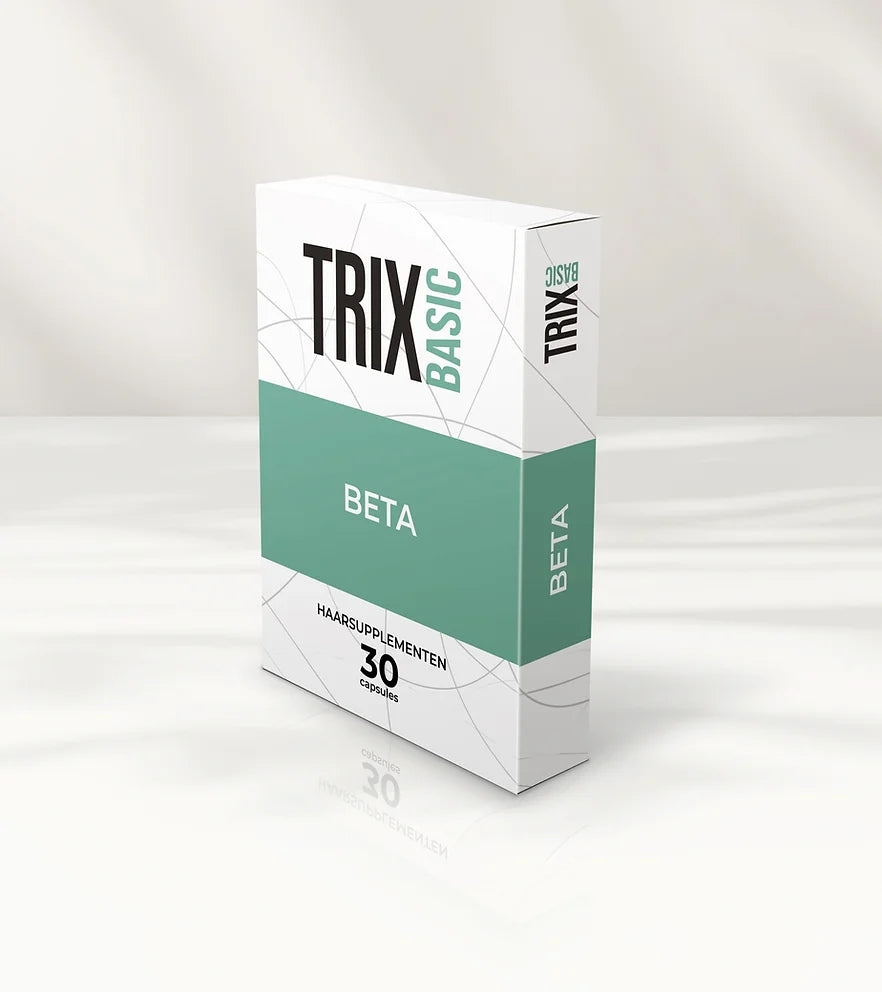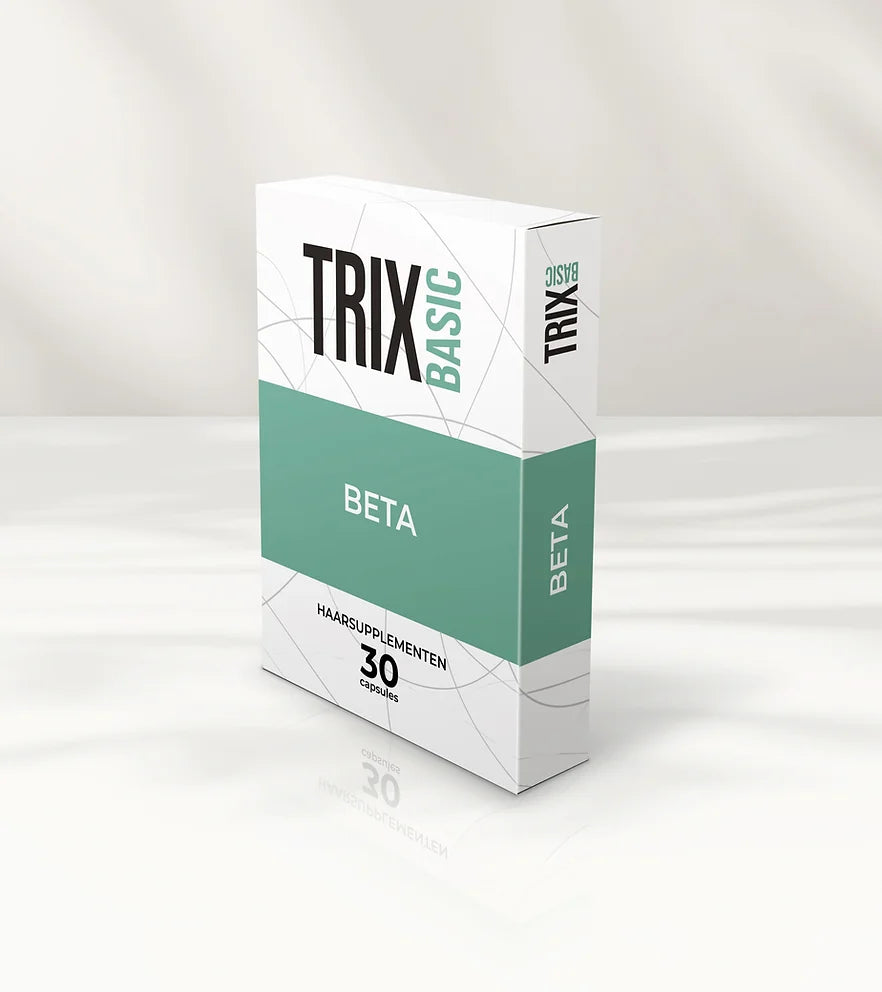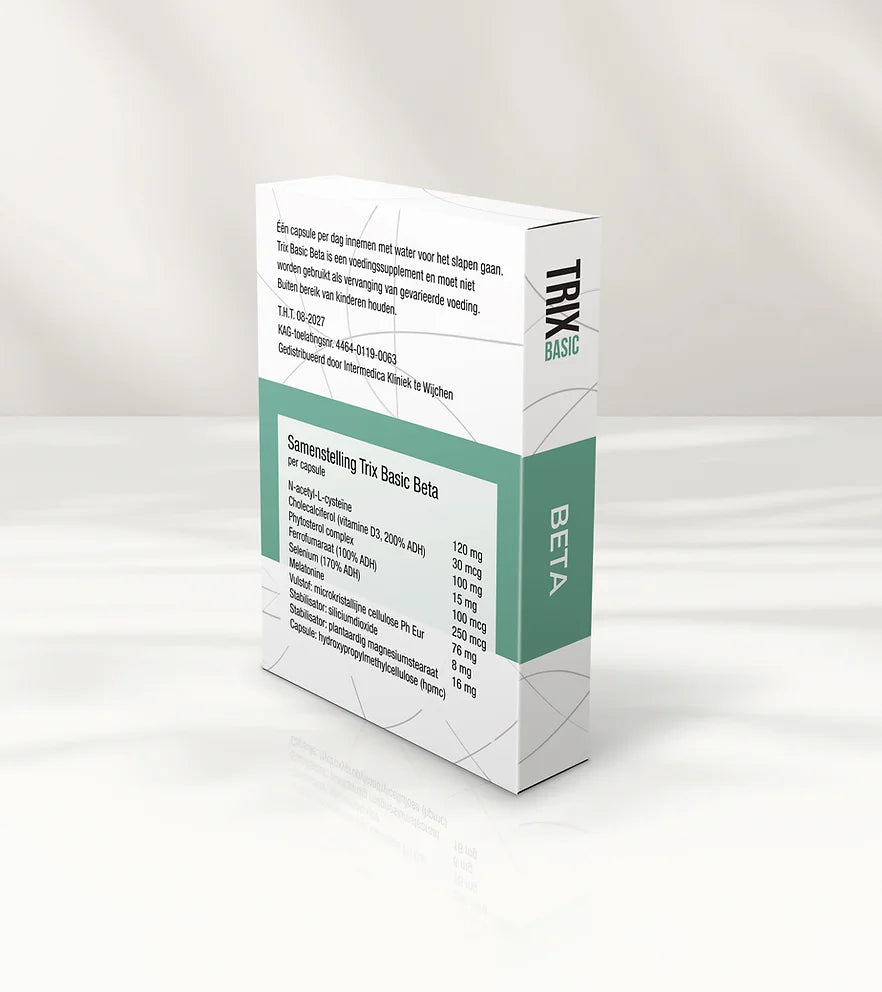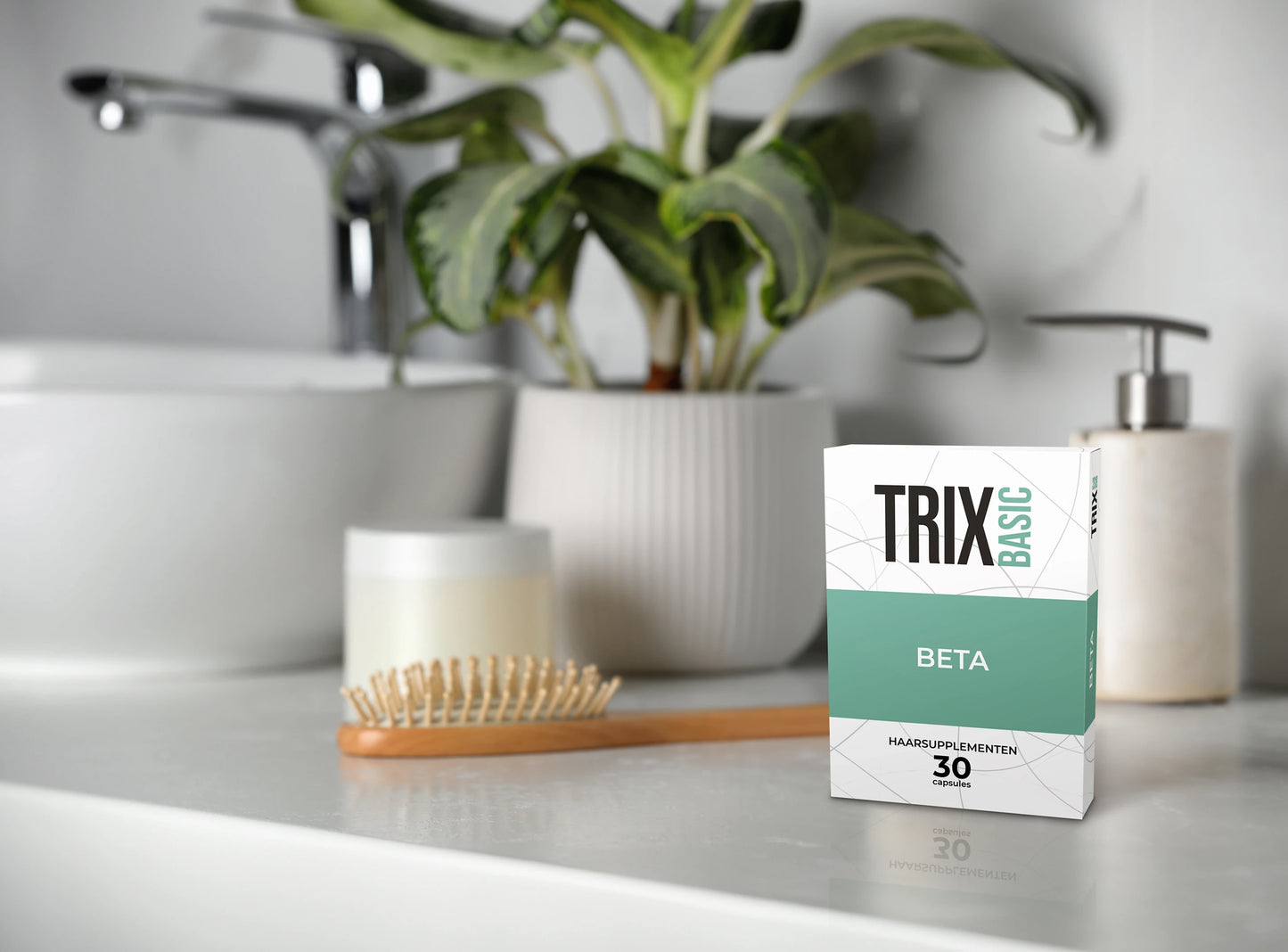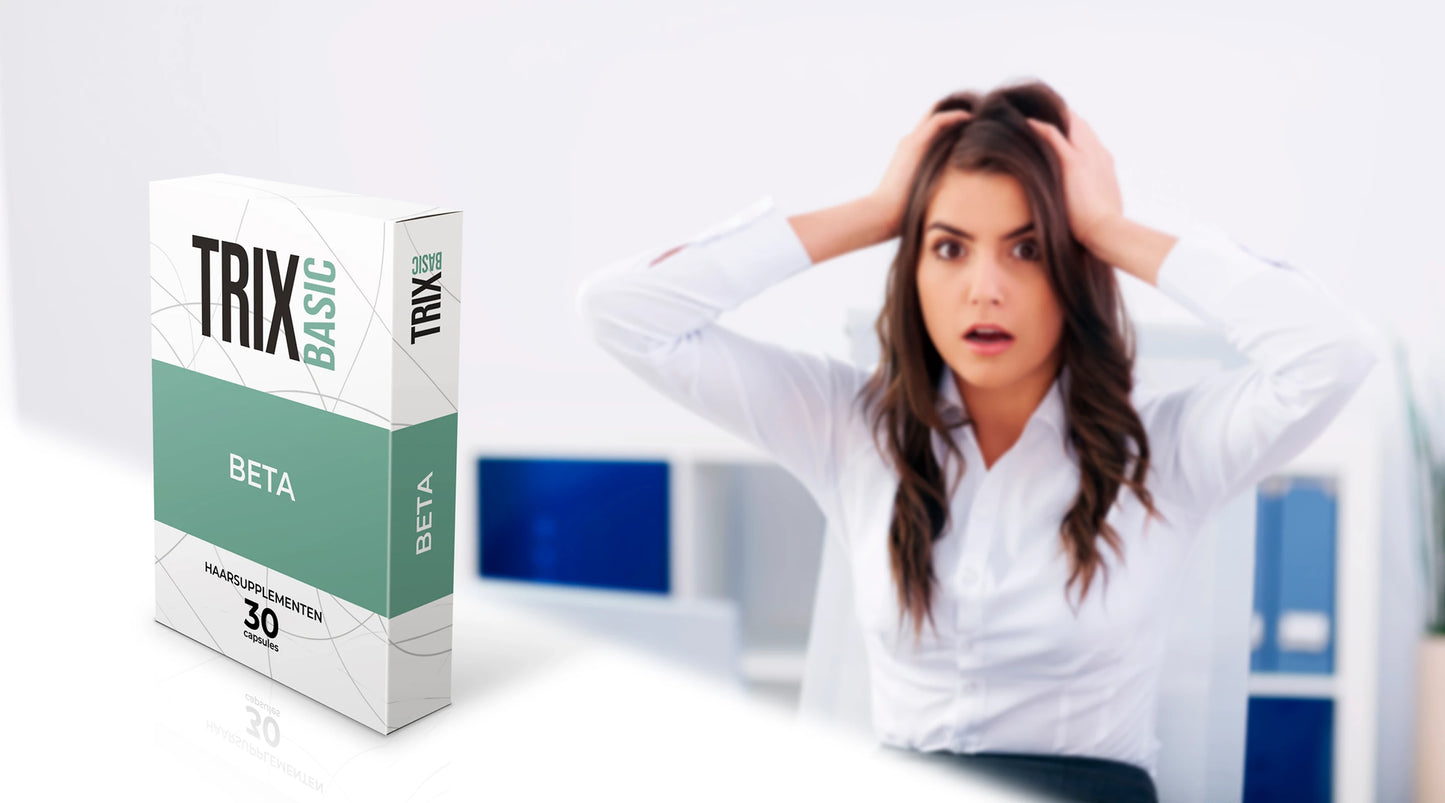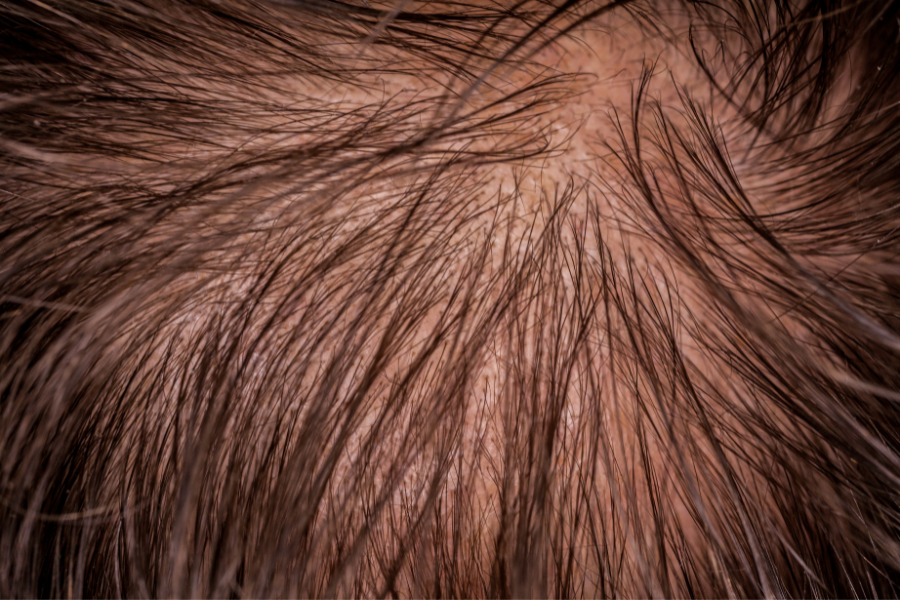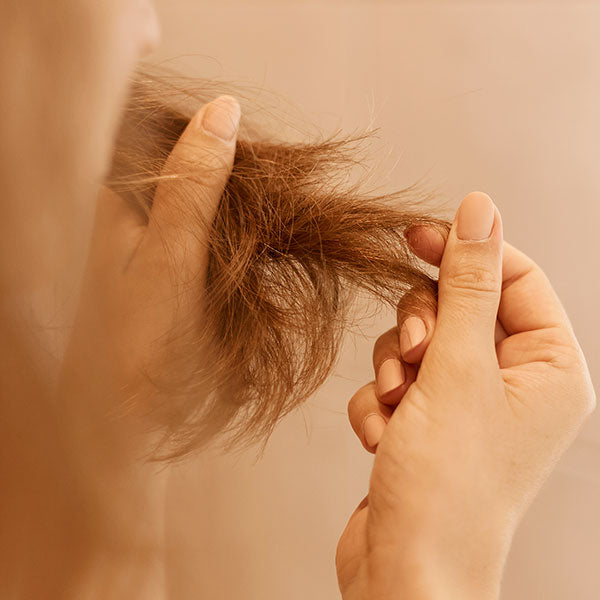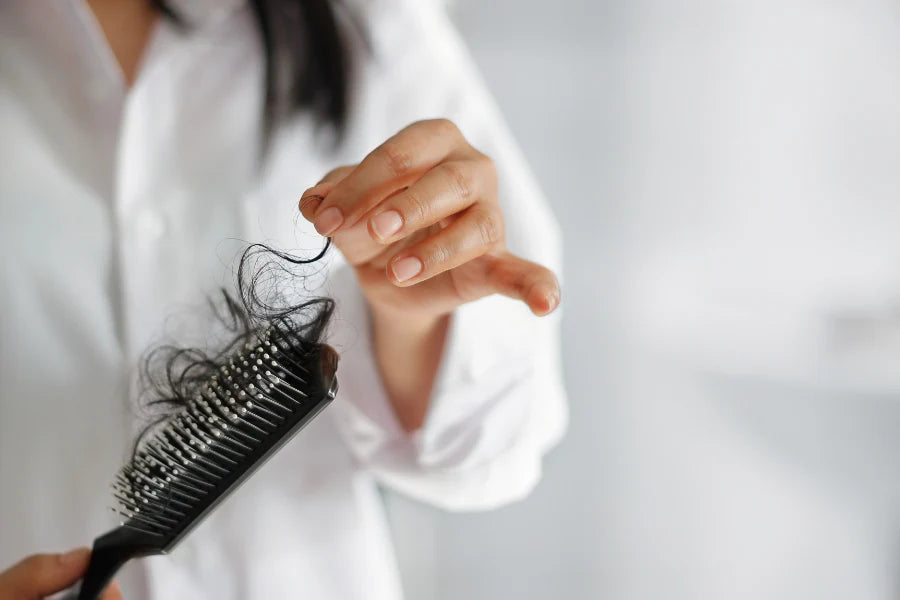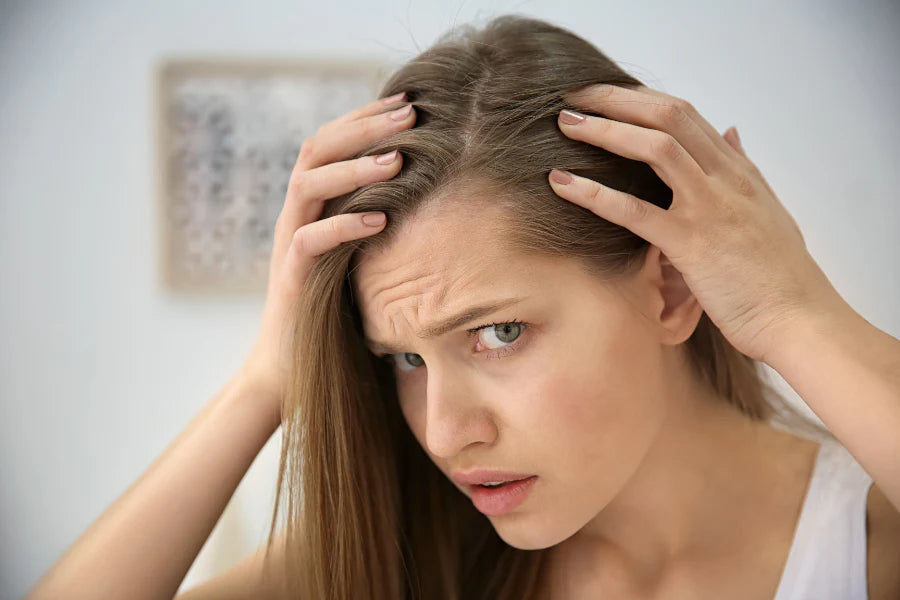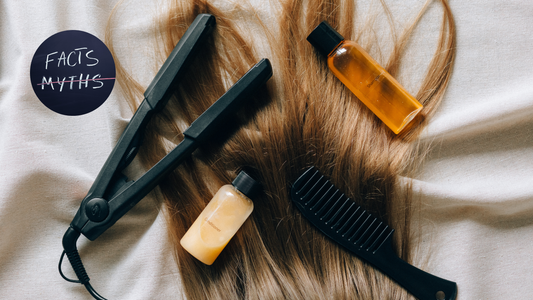
Hair Loss in Autumn: All About Seasonal Shedding & Recovery
Share
Why You Lose More Hair in Autumn (and Why It’s Usually No Reason to Panic)
Many people notice it every year: as soon as the leaves fall, their hair seems to thin as well. Suddenly, more hair ends up in your brush, on your pillow, or in the shower drain. This phenomenon is known as seasonal hair shedding. While it can be alarming, it’s usually a normal and temporary occurrence.
Our hair constantly goes through a cycle of growth, transition, and rest. At the end of that cycle, a hair naturally falls out to make room for a new one. On average, we lose about a hundred hairs a day. During certain times of the year, that number can increase. Scientific studies show that more hairs enter the resting phase especially in summer. Because hair falls out weeks later, the peak of shedding often occurs in autumn. Large-scale studies involving both men and women confirm this pattern: the proportion of hairs in the resting phase is highest in summer, followed by a noticeable increase in shedding in the months afterward.
The exact reason for this is still unclear. Researchers suspect that sunlight and seasonal hormonal fluctuations play a role. The amount of daylight appears to correlate with changes in the hair cycle. External factors can also contribute, such as summer-related stress, feverish infections, vacation diets, or prolonged exposure to sun and sea. All of these triggers can lead hair follicles to shed more hairs a few months later in autumn.
The good news is that seasonal hair shedding is rarely permanent. Because the hair follicles remain intact, they start a new growth cycle after the shedding phase. In most cases, the balance naturally restores itself within a few weeks to months. Still, it can be unsettling—especially if you feel your hair is visibly thinning. It’s important to know that normal seasonal shedding is diffuse: you lose more hair all over, but you don’t develop bald spots. If you do notice clear patches, experience itching, pain, or flaking, or if the hair loss lasts longer than a few months, it’s wise to seek medical advice. If you suspect deficiencies, thyroid issues, or medication side effects, a doctor can investigate further.
TRIX Basic Beta supports your hair from within.
TRIX Basic Beta is a dietary supplement specially developed to optimize the conditions for hair growth and support regrowth during periods of excessive hair loss. It’s intended to be used as a course, for at least four to six months. This makes it especially suitable if you recognize your seasonal hair shedding and know it returns each year. By starting on time, you give your hair the best chance to grow back stronger and make the most of its natural recovery process.
TRIX Basic Beta is a dietary supplement and does not replace medical advice. If your symptoms persist or are worrisome, it is always advisable to consult a dermatologist specialized in hair conditions.
Sources:
American Academy of Dermatology; StatPearls (2024) – Telogen Effluvium; Courtois et al., British Journal of Dermatology (1996); Kunz et al., Dermatology (2009); Hsiang et al., British Journal of Dermatology (2018); Cleveland Clinic – Telogen Effluvium.

